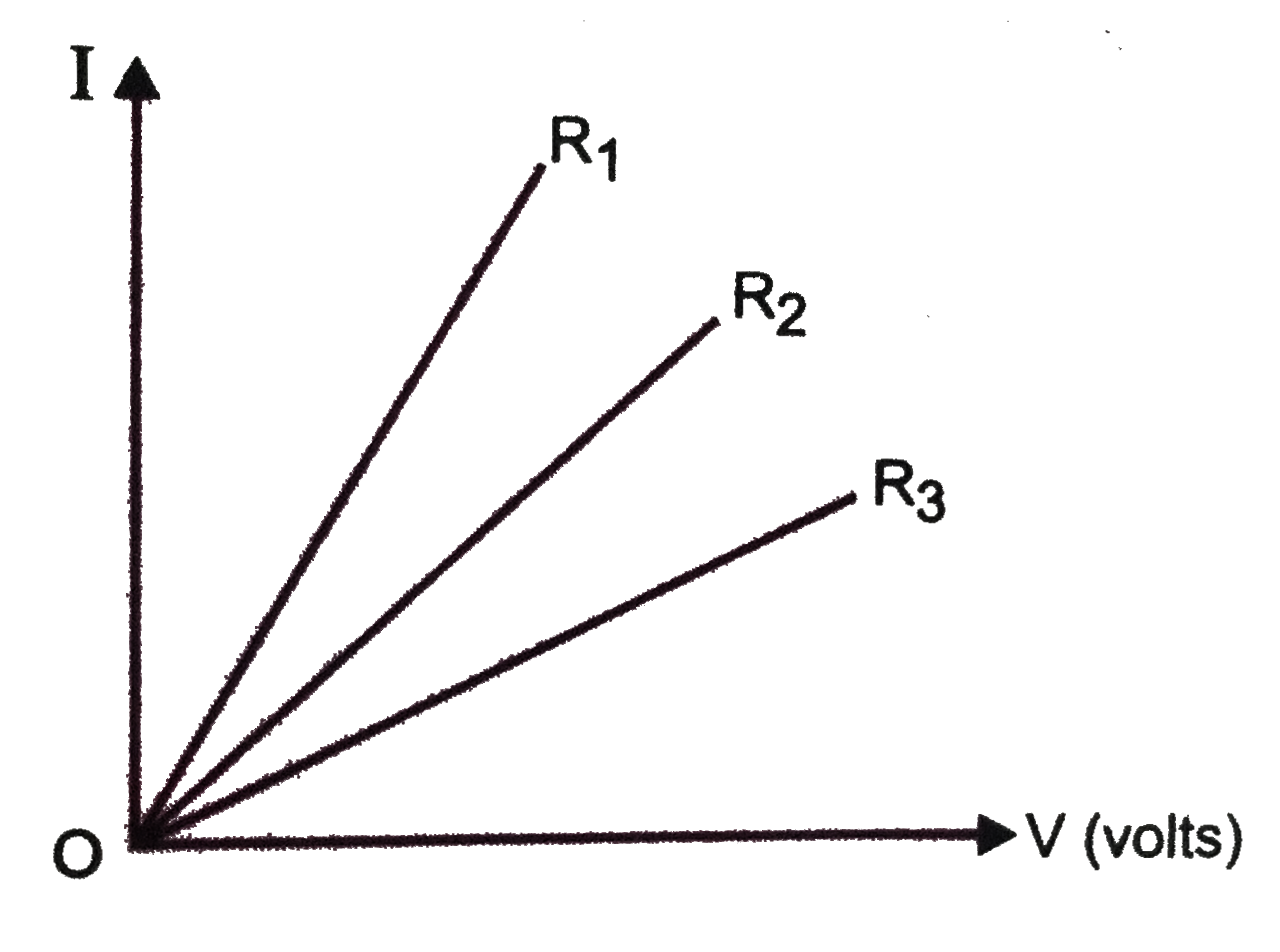A student carries out an experiment and plots the V−I graphs of three samples of nichrome wire with resistances R1,R2andR3 respectively, (Fig. 3.41). Which of the following is true ?

R1=R2=R3
R1>R2>R3
R3>R2>R1
R2>R3>R1
The correct Answer is:C
While performing an experiment, a student plot V - I graph of three samples of nichrome wire with resistances R1,R2andR3. And we know that slope of V and I tells about the resistance and (slope of V and I) ∝1Resistance
i.e.,

So, R3>R2>R1
Topper's Solved these Questions
Similar Questions
For the batteries shown in fig. R1,R2andR3 are the internal resistance of E1,E2,andE3, respectively Then, which of the following is / are correct?

View SolutionIn the given circuit, if I1andI2 be the current in resistances R1andR2, respectively, then
 .
.
View SolutionIn the situation shown, resistance R1,R2 and R3 are in the ratio 3:2:1 , then

View SolutionTwo students perform experiments on series and parallel combinations of two given resistors R1andR2 and plot the following V -1 graphs [Fig. 5.24.]. Which of the graphs is/are correctly labeled in terms of the words 'series' and 'parallel'? Justify your answer.

View SolutionSix wires each of resistance r form a tetrahedron. The equivalent resistance between corners 1-2 and 1-3 are respectively

View SolutionIn the, Ohm's law experiment ot find resistance of unknown resistor R, the arrangement is as shown. The resistance measured is given by Rmeasured=ViV= voltage reading of voltmeter. i=current reading of ammeter. The ammeters and the voltmeter used are not ideal, and have resistance RA and RV respectively. For arrangement shown, the meausred resistance is

View SolutionWrite the expressions for the equivalent resistance R of three resistors R1,R2,andR3 joined in (a) parallel, and (b) series.
View SolutionFind the emf (V) and internal resistance (R) of a single battery which is equivalent toa parallel combination of two batteries of emf V1 and V2 and internal resistances r1 and r2 respectively, with polrities as shown in figure

View SolutionTwo conducting spheres of radii r and 2r are placed at very large separation. Each sphere possesses charge Q. These spheres are connected with a conducting wire of resistance R. Then, which of the following is true?
View SolutionA potential divider is used to given outputs of 2V and 3V form a 5V source, as shown in fig.

Which combination of resistance R1,R2,andR3 gives the correct voltages?
View Solution

